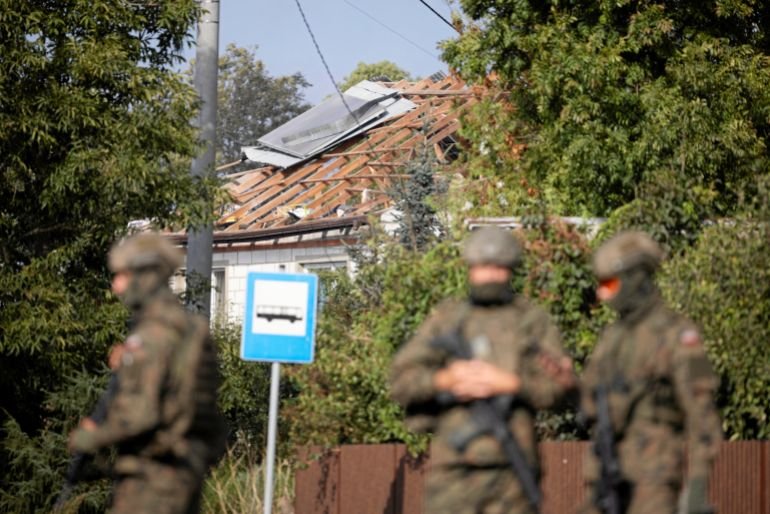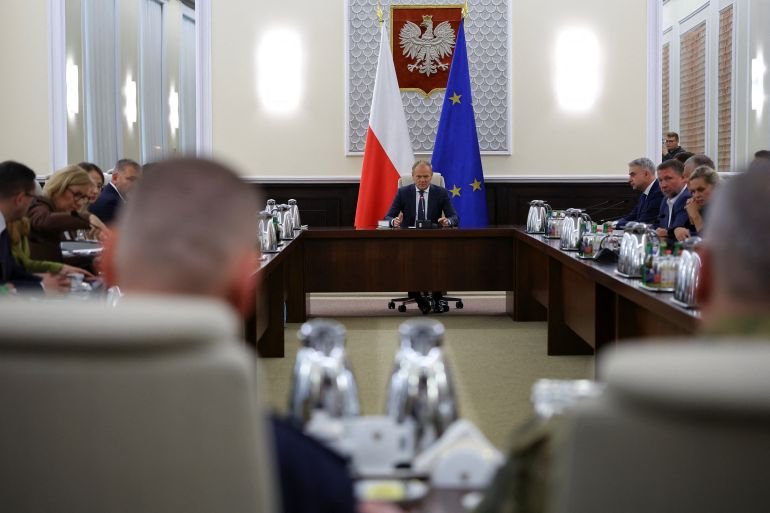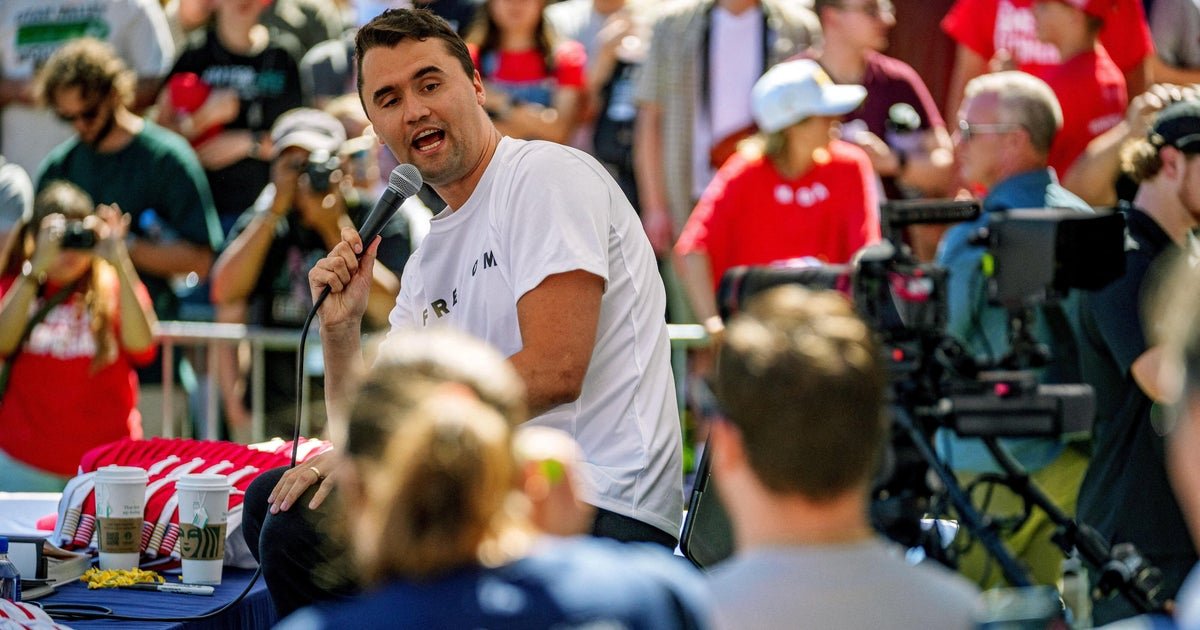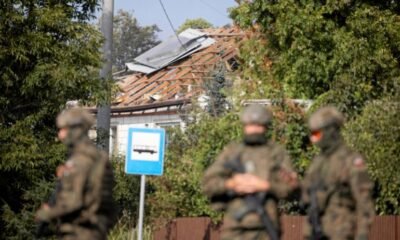Top Stories
Tech leaders take turns flattering Trump at White House dinner

Several of the most powerful business leaders in the country gathered around a table last night to fawn over President Donald Trump for his AI policies.
“You and your policies are really helping a lot,” Microsoft CEO Satya Nadella told the president. AMD CEO Lisa Su praised “the amount of acceleration that we’ve seen just in the few short months that the administration has been in place.” Oracle CEO Safra Catz struck a note of adoration at “the fact that you are our president” and that Trump quickly recognized the importance of AI. “You’ve unleashed American innovation and creativity — all the work you’re doing in basically every cabinet post in addition to what’s coming out of the White House is making it possible for America to win.”
“Thank you for being such a pro-business and pro-innovation president,” OpenAI CEO Sam Altman lauded. “It’s a very refreshing change. We’re very excited to see what you’re doing to make all of our companies and our entire country so successful.” He added that his company would “invest a ton in the United States.”
The round of flattery came during the public portion of a dinner Trump hosted at the White House Thursday with CEOs from many of the top tech companies working in AI, which also included those from Apple, Google, and Meta. Trump made a point of asking several of the CEOs how much they’re spending in the US in the next few years, and seemed pleased after they threw out numbers in the hundreds of billions. Earlier on Thursday, First Lady Melania Trump hosted a task force meeting on AI education where many of those companies pledged investments to educate the youth and workforce on how to use the new technology.
Each of the CEOs stand to gain — or lose — from Trump and his policies
Tech leaders’ presence at the White House has become a relatively commonplace occurrence during this administration. Many of the CEOs who attended Thursday’s dinner also showed up for Trump’s inauguration and donated to his inaugural fund. Zuckerberg had met with Trump in the West Wing shortly before the government’s antitrust trial against his company began. On Thursday, Zuckerberg — whom prior to their recent closeness, Trump has previously threatened to jail — sat right next to the president, who teased Zuckerberg at one point of having the opportunity to launch his own political career with a response to a reporter’s question.
Each of the CEOs stand to gain — or lose — from Trump and his policies. Those include everything from tariffs on semiconductors and other products, permits, access to resources like electricity to power energy-intensive AI, and more. Many of them are already engaged in legal battles with the administration over other parts of their businesses. Trump acknowledged Google’s “very good day” Wednesday when a judge denied Trump’s DOJ the most aggressive antitrust remedies it had asked for in its monopoly search case against the company. “Biden was the one that prosecuted that lawsuit,” Trump said, leaving out that his first administration had brought the complaint, and his second administration litigated the remedies trial. “It’s a long process,” Google CEO Sundar Pichai said. “Appreciate that your administration had a constructive dialogue and we were able to get it to some resolution.” One or both sides could still appeal the ruling.
Apple CEO Tim Cook, whose products are largely assembled in China and who seemed to be the rare business leader in Trump’s first term who managed to walk a fine line of staying on his good side, seemed eager to maintain his good will while seated across the table from Trump Thursday. “It’s incredible to be among everyone here, particularly you and the First Lady,” Cook told Trump. “I’ve always enjoyed having dinner and interacting.” He thanked Trump for “setting the tone such that we could make a major investment in the United States” and added that it “says a lot about your focus and your leadership.”
Later, when a reporter asked about Trump’s plans to tariff semiconductors, Trump reiterated his idea that he’d deploy a “fairly substantial tariff” that could be waived if a company was planning to build in the US. “I’d say Tim Cook would be in pretty good shape,” Trump said.
Top Stories
Poland shoots down Russian drones: Will NATO enter war in Ukraine? | Russia-Ukraine war News

Polish and NATO forces scrambled to intercept Russian drones which entered Poland’s airspace early on Tuesday night and early on Wednesday, marking their first direct military engagement with Moscow since the Kremlin’s full-scale invasion of Ukraine began in 2022.
Both Polish and NATO jets responded to the violation of Polish airspace, which occurred during a Russian aerial attack on Ukraine. “There was an unprecedented violation of Polish airspace by drone-type objects,” the Polish military operational command said in a statement. “This is an act of aggression that posed a real threat to the safety of our citizens.”
Poland temporarily shut down at least three of its airports, including Warsaw’s Chopin Airport, the country’s largest, and advised people to stay at home while the operation continues. People in risk-prone areas in eastern regions of Poland bordering Ukraine, including the capital of Warsaw, have been told to take shelter.
“There is no reason to claim that we are in a state of war… but the situation is significantly more dangerous than all previous ones,” said Polish Prime Minister Donald Tusk. He added that the prospect of a large military conflict is “closer than at any time since the Second World War”.
The Russian drone incursion comes just three days after Moscow hit the main government building in Ukraine’s Kyiv. That attack also damaged the European Union and British Council buildings in the Ukrainian capital.
So, is NATO now inching towards a war with Russia?
What has happened in Poland?
On Wednesday morning, the Polish military said it had shot down “drone-like objects” which entered its airspace during a Russian aerial attack on neighbouring Ukraine.
According to Polish officials, the drones crossed the border amid a wave of Russian aerial strikes targeting western Ukraine, triggering an immediate military response, which was joined by Polish F-16 fighter jets, Dutch F-35, and Italian AWACS surveillance planes.
One of the drones struck a residential building in Wyryki, eastern Poland. Nobody was injured, according to the Reuters news agency.
This is the first time that NATO-allied forces have engaged Russian military assets since Moscow invaded Ukraine in February 2022.
Tusk called Russia’s violation of Polish airspace by a “huge” number of Russian drones a “large-scale provocation”. He added that the NATO forces had shot down the ones that posed any threat.
Later in the day, Tusk informed Poland’s parliament that the first violation of Polish airspace occurred at about 11:30pm (21:30 GMT) on Tuesday, and the last was reported at 6:30am (04:30 GMT) on Wednesday.
He added that preliminary reports suggest there were 19 airspace violations in total, with a “significant number” of drones crossing into Poland.
“We are ready to repel such provocations. The situation is serious, and no one doubts that we must prepare for various scenarios,” Tusk said in his statement. “All our allies are taking the situation very seriously. We have not recorded any casualties.”
Tusk also convened an emergency meeting with his top cabinet ministers and stated that his office was in contact with NATO officials.

Could this drag NATO into Russia’s war in Ukraine?
The incident has thrust NATO’s collective defence principles into the spotlight. Being a NATO member, a drone attack on Poland could trigger Article 5 of the NATO treaty.
That article forms the cornerstone of the alliance’s collective defence strategy. It states that an “armed attack” against one or more members in Europe or North America shall be considered an attack against all, obligating allies to take action, including the use of armed force, to restore security.
Article 5 is not triggered automatically by such an attack, but can be initiated by an affected nation. It requires a consensus among NATO’s 30 member states that the incident meets the threshold of an attack warranting collective action.
Since the treaty was first signed in 1949, Article 5 has been invoked only once, following the September 11, 2001, attacks on the US.
Will Poland initiate Article 5?
Not quite yet. Tusk said Poland will invoke Article 4 of the treaty, under which a nation can request a formal consultation within the alliance if it believes its security has been threatened. This would serve as a political precursor to Article 5 deliberations.
Historically, Article 4 has been invoked only seven times since NATO’s creation; the last time was by Bulgaria, the Czech Republic, Estonia, Latvia, Lithuania, Poland, Romania and Slovakia in 2022 immediately after the Russian invasion of Ukraine.
While Tusk said he appreciates expressions of solidarity, “the words are not enough” and Poland will request “much greater” support from its allies.

How has the EU responded to this incident?
The EU’s top diplomat, Kaja Kallas, vice president of the European Commission, said the incident marked an escalation of Russia’s war in Ukraine.
“We must raise the cost on Moscow, strengthen support for Ukraine, and invest in Europe’s defence,” she said in a statement posted on X. “The EU plays a major role and we will support initiatives like the eastern border shield defence line.”
Kallas said the EU stood in “full solidarity with Poland” and called the Russian drone intrusion “the most serious European airspace violation by Russia since the war began, and indications suggest it was intentional, not accidental”.
EU’s defence commissioner, Andrius Kubilius, also emphasised the need for a “drone wall” along its shared borders. “Once again Russia tests frontier states, EU & NATO,” Kubilius wrote in a post on X. “We shall work together with member states, frontier countries and Ukraine. Russia will be stopped.”
How has Ukraine responded?
Ukraine’s president, Volodymyr Zelenskyy, warned that Moscow was continuing to “push the boundaries of what is possible” by aiming drones at Poland.
“If [Russia] does not encounter a strong reaction, it remains at the new level of escalation,” Zelenskyy said, adding that 15 regions of Ukraine had been targeted overnight in a “massive” attack by 415 drones of various types and more than 40 cruise and ballistic missiles.
“The Russians must feel the consequences. Russia must feel that the war cannot be expanded and will have to be ended,” said the Ukrainian president.
What else is Russia doing right now?
The violation of Polish airspace by the Russian drones comes as Moscow ramps up its attacks on Kyiv, stalls ceasefire talks and plans military exercises in neighbouring Belarus.
Poland said it would close its border with Belarus on Thursday, at midnight (22:00 GMT), in advance of an upcoming military drill.
Russia and Belarus’s large-scale military exercises, called the “Zapad” drills – meaning “west” in Russian – typically involve thousands of troops, tanks, aircraft and live-fire operations across western regions. The drill is a particular security concern for neighbouring NATO member states Poland, Lithuania and Latvia.
“On Friday, Russian-Belarusian manoeuvres, very aggressive from a military doctrine perspective, begin in Belarus, very close to the Polish border,” Tusk told a government meeting in Poland.
Belarus’s defence minister said this year’s Zapad would include drills for the possible use of nuclear weapons and the Russian-made, intermediate-range hypersonic Oreshnik missile.
Past Zapad drills have prompted concerns in the West, most notably in 2021, when Russian troops deployed in Belarus for exercises stayed for longer than expected and then spearheaded one part of the 2022 invasion of Ukraine.
India, which has been hit by United States President Donald Trump with additional trade tariffs for buying Russian oil, is also expected to join the seven-day military drill. Trump is now also pushing the EU to levy a 100 percent trade tariff on India – and has reportedly offered to match this if it agrees.
Despite sustained diplomatic engagement for months as well as pressure from the US, the gap between Moscow and Kyiv shows little sign of narrowing, particularly on issues such as territorial concessions and post-war security arrangements.
Top Stories
Charlie Kirk shot and killed at Utah event; manhunt for shooter still ongoing

Conservative activist and Turning Point USA co-founder Charlie Kirk died Wednesday after he was shot at an event at Utah Valley University. He was 31 years old.
A suspect has not been identified, and state authorities said Wednesday evening a “manhunt” for the shooter is still in progress. Two people who were taken into custody earlier were not tied to the shooting and were later released.
Utah Valley University police said they were going “building to building” to evacuate people.
President Trump posted on Truth Social: “The Great, and even Legendary, Charlie Kirk, is dead. No one understood or had the Heart of the Youth in the United States of America better than Charlie. He was loved and admired by ALL, especially me, and now, he is no longer with us. Melania and my Sympathies go out to his beautiful wife Erika, and family. Charlie, we love you!”
Kirk was participating in an event at the Orem, Utah, school as part of his organization’s “The American Comeback Tour” when he was attacked.
The university said in a statement shared to social media that a shot was fired at Kirk shortly after 12 p.m. local time, and he was hit. A single shot was fired, two law enforcement sources told CBS News.
Video of the incident showed Kirk speaking to a large crowd at an outdoor “Prove Me Wrong” debate, where he invites students to challenge his political and cultural views, when the shot rings out.
Elected officials on both sides of the aisle had swiftly condemned the attack on Kirk and denounced acts of political violence.
Top Stories
Brock Purdy Injury Update, New Signings, and Kendrick Bourne’s Return

The San Francisco 49ers returned to the practice field on Wednesday with a busy day of roster moves, injury updates, and the first look at a familiar face back in red and gold.
Injury Report
Head coach Kyle Shanahan opened his press conference with an injury list and several starters were held out of today’s practice, either for injuries or rest:
Shanahan said Purdy is a “long shot” to play this Sunday against the New Orleans Saints and acknowledged the quarterback’s toe injury could sideline him for multiple weeks. He later clarified the injury is similar to turf toe, though not in the typical spot.
Tight end George Kittle remains sidelined with a hamstring injury and is expected to miss four games. Shanahan called the absence “a challenge for everybody,” noting Kittle’s impact in both the run and pass game.
Roster Moves
On Wednesday morning, the 49ers signed veteran kicker Eddy Piñeiro to a one-year deal. Piñeiro, entering his eighth NFL season, said the decision to join San Francisco was all about joining a winning culture.
“I want to win games,” Piñeiro said. “I want to be part of a good culture. I’m in my eighth year of my career and I want to win. This is the place to be.”
The team also signed TE Messiah Swinson to the practice squad.
WR Kendrick Bourne practiced Wednesday for the first time since rejoining the 49ers on a one-year contract. After spending his first four NFL seasons with San Francisco and the last three with the New England Patriots, he’s leaning on familiar connections to get up to speed quickly.
“(QB Mac Jones) has been helping me get acclimated,” Bourne said. “Studying with him and stuff like that. He’s been just giving me tips, gems, of how to think about things. So, it’s dope to be around somebody that I know and just using it to my advantage to get acclimated… Me knowing him obviously helps. We can speak to each other a certain way, he can get me in certain ways because we’re already connected, which is ironic.”
It’s no small task to join a team on a Monday and be ready to play by Sunday, but Bourne said his experience in Shanahan’s system along with his chemistry with Jones is helping ease the transition.
“I don’t think it’s too much, I think it’s up to me,” Bourne said. “It’s my preparation. I’ve been meeting with (wide receivers coach Leonard Hankerson) Hank extra, meeting with him early, meeting with him every second I get because I’m just getting acclimated, knowing where I’m going to go, different spots, trying to know the concepts and stuff like that. So, I don’t think it’s too much to ask, but it’s up to me. It all it falls on me. So, if I go out there not knowing what I’m doing, it’s because I didn’t study enough and things like that. I’ve been attacking it this week and I’m excited to see what happens.”
Looking Ahead
The 49ers travel to face the Saints this Sunday in New Orleans. Shanahan recalled the intense atmosphere from the 2019 game at the Superdome:
“That was the loudest game I’ve ever been in. We’re preparing for that and hope to make it quieter.”
-

 Business2 weeks ago
Business2 weeks agoThe Guardian view on Trump and the Fed: independence is no substitute for accountability | Editorial
-
Tools & Platforms4 weeks ago
Building Trust in Military AI Starts with Opening the Black Box – War on the Rocks
-

 Ethics & Policy2 months ago
Ethics & Policy2 months agoSDAIA Supports Saudi Arabia’s Leadership in Shaping Global AI Ethics, Policy, and Research – وكالة الأنباء السعودية
-

 Events & Conferences4 months ago
Events & Conferences4 months agoJourney to 1000 models: Scaling Instagram’s recommendation system
-

 Jobs & Careers2 months ago
Jobs & Careers2 months agoMumbai-based Perplexity Alternative Has 60k+ Users Without Funding
-

 Education2 months ago
Education2 months agoVEX Robotics launches AI-powered classroom robotics system
-

 Podcasts & Talks2 months ago
Podcasts & Talks2 months agoHappy 4th of July! 🎆 Made with Veo 3 in Gemini
-

 Education2 months ago
Education2 months agoMacron says UK and France have duty to tackle illegal migration ‘with humanity, solidarity and firmness’ – UK politics live | Politics
-

 Funding & Business2 months ago
Funding & Business2 months agoKayak and Expedia race to build AI travel agents that turn social posts into itineraries
-

 Podcasts & Talks2 months ago
Podcasts & Talks2 months agoOpenAI 🤝 @teamganassi



















